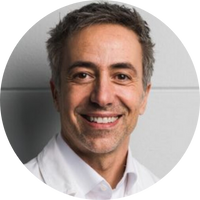Face Lifting (facelift or rhytidectomy) is the most important surgical procedure to combat facial aging. We perform the facelift by stretching / repositioning the facial muscles (SMAS) and, where necessary, removing or introducing fat.
The degree of improvement varies from subject to subject. The initial conditions of the skin influence it, the degree of damage produced by solar radiation and smoke, the underlying muscle and bone structures, and a variety of other factors.
The surgery is generally performed under general anesthesia. The duration of the intervention is approximately 4 hours. The incision line starts from the scalp in the temporal region, continues in front of the ear, curves around the ear lobe, continuing in the groove behind the ear, and sometimes continues downwards, ending in the hair of the nape region. Through these incisions, the skin is lifted and freed from the underlying muscle tissues.
At this point, we carry out the actual lifting by performing muscle flaps that are pulled upwards and fixed to solid structures. The skin is then repositioned by removing the excess without any residual tension so that the surgical wounds can heal without excessive stress and the scars are invisible.
A first consultation visit with the surgeon will better clarify the results and risks associated with this type of intervention.
It is essential that the patient becomes aware, during the interview, that our goal when performing a facelift is the STABLE and DURABLE upward repositioning of the tissues with reduction or disappearance of the furrows and folds of the face and neck, and that the presence of wrinkles can be a limitation or even a contraindication to the intervention.
In fact, in the presence of a strongly wrinkled face (due to aggressive sun exposure, smoking, and/or unfavorable genetics), also associated with the presence of moderate folds and furrows, we do not primarily indicate surgical lifting for the following reason: the result would only be temporary and in any case partial as the surface tissues, being inelastic (i.e., wrinkled and lacking in elasticity), after an initial upward repositioning to accompany the muscle flaps, once the post-surgical edema has been lost, within a few months they would tend to reposition themselves downwards and to reform wrinkles (just like the abdomen of a pregnant patient after childbirth, if it has stretch marks, it does not return to its original pre-birth situation, but having lost elasticity it tends to fall down).
Therefore a wrinkled, inelastic skin must be “treated before being pulled”. Otherwise, the surgery will fail. Medical treatments can require several sessions that can take many months (on the other hand, wrinkles have formed over many years, and the surgeon must have some time to be able to remove them) before obtaining a fundamental change in the structure of the skin; in the meantime, the patient can be treated with hyaluronic acid-based fillers and traction threads to be able to already see “changes”.
The treatments of inelastic skin are almost exclusively of aesthetic medicine (with the exception of superficial lipofilling with stem cells), such as, eg. hyaluronic acid, botulinum toxin, laser, fractional radiofrequency, needling, micro-focused ultrasounds, or chemical peels, as well as the need to educate the patient to a conscious tan and to take antioxidants, basic nutrition, and vitamins that constitute a first approach to the concepts of anti-aging medicine.
Medical treatments, together with a healthier lifestyle and diet and the intake of antioxidant products, lead to a progressive change in the tissues of the body and particularly of the face. The skin regains elasticity because it increases the endogenous synthesis of collagen and elastin, thus becoming suitable for a face lifting operation that on healthier skin will give a STABLE and LONG-LASTING result over the years.
PRE-OPERATIVE PREPARATION
It is advisable to eliminate smoking for at least 20 days before the surgery. Many studies have shown that the incidence of complications is 10 times higher in smoking patients than in non-smokers. It is also advisable for patients being treated with oral contraceptives to stop taking these drugs one month before surgery. Any hair dyes are allowed up to three days before the operation.
POST-OPERATIVE COURSE
At the end of the surgery, a soft compression bandage is applied in order to maintain moderate compression over the entire area of the surgery. The dressing is changed after two or three days, the wounds are checked, and sometimes a new, smaller dressing than the old one is applied. On the fourth or fifth postoperative day, the dressing is removed, and no more bandaging is required. 5 to 7 days after surgery, sutures will be removed. Depending on the degree of surgery, patients will normally be presentable within about two weeks.
Absolute rest is required for the first week after surgery. It is possible to wash the hair gently after removing the dressing. After the first week, regular physical activities and driving of the car can be resumed, after 2-3 weeks even sexual activity. After the third week, it is possible to resume sporting activity. It is necessary to reduce sun exposure to a minimum by using extremely high protection screens and possibly hats and sunglasses. There is almost always a certain degree of reduction in sensitivity in front of the ear and neck. Although normal sensitivity tends to return gradually, a mild degree of hypoesthesia (decreased sensitivity) may persist for a few months. Men are therefore advised to be careful in shaving during the postoperative period.
POSSIBLE COMPLICATIONS
If performed by expert hands and in qualified facilities, the face lifting operation does not present any particular risks. It is important to avoid smoking cigarettes for 20 days before and after surgery to promote healing. It is essential that the patient strictly adheres to the surgeon’s instructions and takes the prescribed therapy.
Face and neck lift before and after:



Neck lift before and after:





